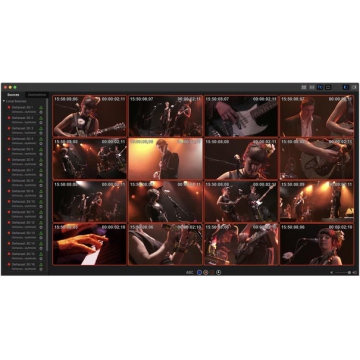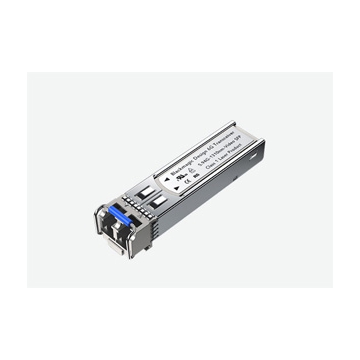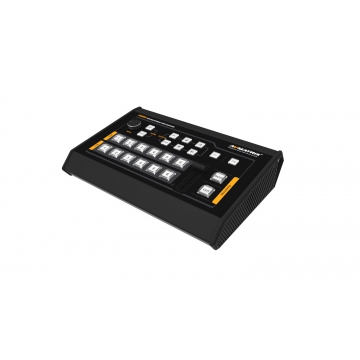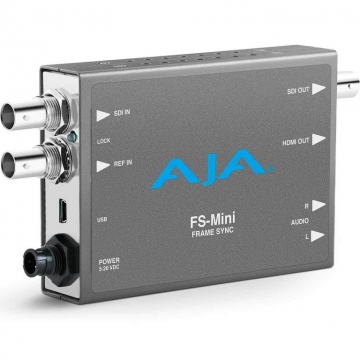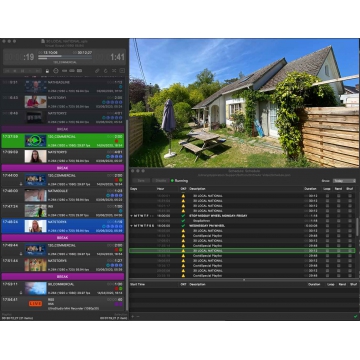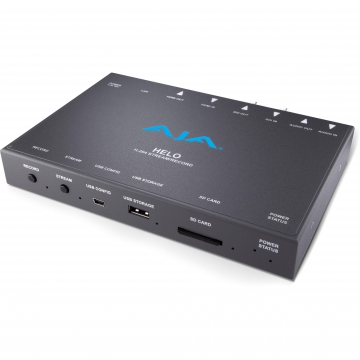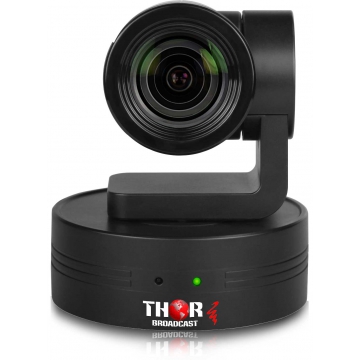Movie Recorder
Reference:
Multichannel edit-while-ingest on one Mac
• Fully configurable user interface
• NDI® sources
• External audio sources (only on local sources, not supported with NDI®)
• Effects and overlays (8-bit only)
• HEVC (H.265) support
• Save and restore configurations

Secured Payment

Delivery Policy

Refunds & Return Policy
Supports Devices from AJA and Blackmagic-Design
Yes
M|Family
Yes
NDI® sources
Yes
Direct Link Sources (from one of Softron's playout application)
Yes
Remotely Control other MovieRecorders
Yes
Record Multiple channels at once (Depend on the format, codec and the computer. Up to 12 channels on one Mac)
Yes
Max Resolution (Depend on the video device used)
Up to 4K
Pixel Formats (Depend on the video device used)
8bit, 10bit or ARGB
Add Effects and Overlays
Yes - only in 8bit
External Audio Sources (instead of using the audio from the video device, use another audio available for the macOS)
Yes - on "Local Sources", not yet on NDI sources
Audio Mapping (done in the AV Presets)
Yes
Timecode Sources
Video device timecode (LTC, RP188,...) or application timecode (Mac Clock, Audio LTC, Timecode Systems)
Record to multiple Destinations with different codecs using easy presets
Yes
MXF Support
Yes
Advanced codecs support
Yes
Add effects (crop, resize, rotate) and overlays (text, timecode, image) on the recorded video
Yes
Closed Captioning Record (CEA-708 to a QuickTime CC track)
Yes only with 8bit sources
Looped recording (record permanently in the same file and go back to the beginning when it reaches the end of the file. Ideal for TimeShifting playout for example)
Yes
Custom naming (to automatically name your files with tokens)
Yes
Metadata (embedded in the QuickTime file or as a sidecar file)
Yes
Frame-accurate automatic split the recordings into chunks (support for 24/7 recording with no frames lost)
Yes
Frame-accurate manual split the recordings (create a new file manually instead of manually)
Yes
Support edit-while-ingest
YES with MXF, Classic or Segmented destinations (compatibility depend on the editing software)
Remotely Controllable using a REST API
Yes
Control with GPI triggers (Requires GPICommander)
Yes
Send GPI triggers (Requires GPICommander)
Yes
Control from Elgato's Stream Deck
Yes
Controllable via AppleScript
Yes
Trigger AppleScripts when start/stop record or on error
Yes
VTR Control and batch capture (using RS422 port on a device or our SerialCommander)
Yes Only record from tape, no record to tape available
Fully configurable user interface
Yes
Save and restore configurations (save the layout, source names, scheduled recordings, etc... and restore them at a later time)
Yes
Remote Source Slave mode
Yes
Scheduled Recording (repeated weekly, or specific date)
Yes
Multiple Destinations
Yes
Supported Codecs
ProRes, H.264, AVC-Intra, DV/DVCPRO, DVCPRO HD, DNxHD, FFV1, IMX, XDCAM
MXF
Yes
Closed Captioning
Yes
Metadata
Yes
External audio sources (including Dante, or MADI)
Yes
Add effects (crop, resize, rotate) and overlays (text, timecode, image) on the recorded video
Yes
Save and restore configurations
Yes
Trigger AppleScripts when start/stop record or on error
Yes
VTR Control and batch capture
Yes
Remote Source Slave mode
Yes
External audio sources (including Dante, or MADI)
Yes
NDI® Sources
Yes
Add effects (crop, resize, rotate) and overlays (text, timecode, image) on the recorded video
Yes
Save and restore configurations
Yes
Remote Source Slave mode
Yes
Manually split recordings
Yes
SYSTEM REQUIREMENTS
Compatible macOS
Version 3.0 to 3.1: macOS 10.8.5 to macOS 10.12.6*
Version 3.2 to 3.4: macOS 10.9.5 to macOS 10.12.6*
Version 3.5: macOS 10.10.5 to macOS 10.12.6*
Version 3.6 to 4.1: macOS 10.11.6 to macOS 10.14.6*
Version 4.2: macOS 10.12.6 to macOS 10.14.6*
Version 4.3 and later: macOS 10.12.6 or later*
For streaming destinations: macOS 10.14.5 or later*
WARNING: macOS 10.15 (Catalina) requires MovieRecorder 4.3 or later
Supported Mac computers
All are supported, no specific requirement, except that the required macOS can be installed, and that it has enough resources for what you need to do.
Recommended macOS
macOS 10.14.6 or later*
Recommended RAM
4 GB for the first channel. Then add 2GB per additional channel.
Supported Graphics Cards
A graphics card that supports Metal is recommended.
Supported Sources
AJA, Blackmagic-Design, M|80, M|62, M|44, NDI®
Hardware acceleration to encode in H.264
With all Mac computers with i5 or i7 processors, running macOS 10.9.5 or later for one channel. macOS 10.13 or later is required for multichannel support
Hardware acceleration to encode in H.265 / HEVC
With all Mac computers with 6th generation of intel processors (2016 and later), running macOS 10.13 or later. Note that hardware acceleration is available only for one channel
Compatible Storage
Most storage that can sustain the required constant write speed (depending on the number of streams, the codec and format). For network attached storage (NAS), make sure to enable Macro blocks, and disable cache flushing. If you need to run tests, make sure to do long term tests.
Requires Monitor Connected (Open GL Active)
Yes. Even if MovieRecorder should behave fine in most cases, it is recommended to keep a monitor connected at all times for best performances. Or you should make the macOS think that there is a monitor connected. Beware of some KVM switches that can cause interrupts in the signal.
Number of license required
One complete license required per channel (source).
* We know that some of our users cannot upgrade their macOS very often. This is why Softron tries to maintain compatibility with older versions of macOS as much as possible, but it is not always possible to achieve. Because Operating Systems are usually significantly improved over previous versions, Softron must use many of the more capable built-in functionalities inherent in Apple's latest OS releases. Failing to do so would mean that Softron software would essentially be blocked from using the new Frameworks provided in the OS. For this reason, Softron's free support is provided only on the current and previous macOS versions. Also, most of our tests will be done on these macOS versions, and only basic tests will be done on the previous OS. We will always try to help, but in some cases, the best solution is to upgrade your macOS to a more recent version.

 Brands/Accusys-01.png)
 Brands/Aja-01.png)
 Brands/Avernedia-01.png)
 Brands/Avmatrix-01.png)
 Brands/Blackmagicdesign-01.png)
 Brands/Bluefish444-01-01.png)
 Brands/Caton-01.png)
 Brands/datavideo-01.png)
 Brands/Everet-01.png)
 Brands/Konvision-01.png)
 Brands/Lupo-01.png)
 Brands/Nitecore.png)
 Brands/PlayBoxTechnology.png)
 Brands/Proton VPN.png)
 Brands/Raysync.png)
 Brands/Softron-01.png)
 Brands/Thor-01-01.png)
 Brands/TP-Link-01.png)
 Videography/Battery Plate-01.png)
 Videography/Camera Batteries.png)
 Videography/Camera Mounts.png)
 Videography/DSLR Camera-01.png)
 Videography/ENG Camera-01.png)
 Videography/Fixed Cameras.png)
 Videography/On Camera LED.jpg)
 Videography/On-Camera Monitors.jpg)
 Videography/PTZ Cameras-01.png)
 Videography/Viewfinder-01.png)
 Video/UpDownCross Converter.jpg)
 Video/DA-01.png)
 Video/Frame Sync.jpg)
 Video/Mobile IO.jpg)
 Video/Muxer & DeMuxer-01.png)
 Video/Portable Recorders.jpg)
 Video/SDI Multiplexers.png)
 Video/Sync Generator.png)
 Video/converters-01.png)
 Video/Video IO Boards.jpg)
 Video/video router-01.png)
 Video/Vision Mixer.jpg)
 Audio/Audio Converters.png)
 Audio/Embedder & Disembedder.png)
 Lights/LED Panel-01.png)
 Lights/On Camera LED.jpg)
 Displays/1RU Rackmount.jpg)
 Displays/On-Camera.jpg)
 Displays/Portable Monitors.jpg)
 TCP&IP/Video Contribution 02-01.png)
 TCP&IP/Encoder & Decoder-01.png)
 TCP&IP/Encoders.jpg)
 TCP&IP/ENG & SNG.png)
 TCP&IP/Fiber Converters.png)
 TCP&IP/Optical Module-01.png)
 TCP&IP/streamer-01.png)
 TCP&IP/Set-Top Box.jpg)
 TCP&IP/Network Switch.png)
 Software/CG.png)
 Software/File Acceleration.png)
 Software/ENG.png)
 Software/Rec.png)
 Software/Video Player.png)
 Software/Video Playout.png)
 Software/VPN2.png)
 RF/HDMI RF Modulator-01-01.png)
 IT/QSFP.png)
 IT/Workstation.png)
